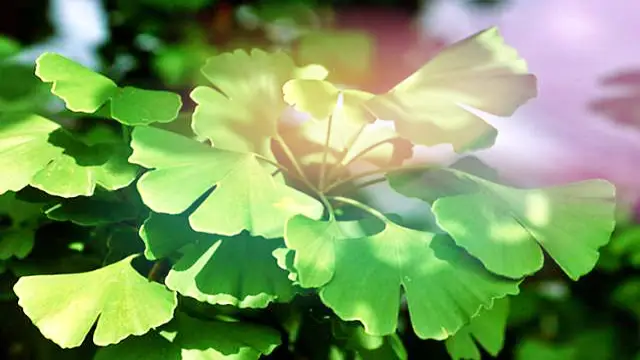The Ginkgo tree, also known as the maidenhair tree, is one of the oldest living fossils on our planet. This remarkable plant has survived for millions of years, making it a true marvel of nature.
A Journey Through Time
Fossilized leaves of Ginkgo species that look like today’s Ginkgo biloba have been found in rocks dating back to the Jurassic Period, around 140 to 200 million years ago. This was a time when dinosaurs roamed the Earth. According to research by K. Bauer and colleagues (2013), Ginkgo seedlings resembling modern varieties date back even further, to the mid-Triassic Period, over 200 million years ago.
Cultivated Through the Ages
All Ginkgo trees found in North America are descendants of those cultivated in Asia for centuries. These trees were often grown in temple gardens, cherished for their beauty and resilience. In fact, petrified logs of Ginkgo have been discovered in flood sediments and lava flows near the Columbia River Gorge in Washington. These logs tell a story of ancient forests that thrived in this region 150,000 years ago.

Unique Leaf Structure
The Ginkgo tree is easily recognized by its fan-shaped leaves, which resemble the leaflets of the maidenhair fern (Adiantum). One fascinating feature of Ginkgo leaves is their unique vein structure. The veins are dichotomously branched, meaning they fork into two branches. This primitive characteristic is a trait shared with many extinct plants from the Ginkgoales order, known only through fossils.
Botanical Classification
The Ginkgo biloba belongs to the Ginkgophyta division, making it a true gymnosperm. Unlike flowering plants, Ginkgo trees produce “naked” seeds, which are not enclosed in a fruit. The cherry-like structures that some people mistake for fruit are actually seeds. In contrast, flowering plants (angiosperms) have seeds enclosed in a ripened ovary, which is made up of modified leaves called carpels.
Why Ginkgo Matters
The Ginkgo tree is not just a living fossil; it plays a significant role in our ecosystem. Its unique characteristics make it a valuable species for research and conservation. Ginkgo trees are known for their resilience to pollution and disease, making them ideal for urban environments. They also provide shade and beauty to parks and streets.
Health Benefits of Ginkgo
In addition to its historical significance, Ginkgo biloba is often used in traditional medicine. Many people believe that Ginkgo extracts can improve memory and cognitive function. Some studies suggest that Ginkgo may help with anxiety and depression, although more research is needed to confirm these benefits.
Conclusion
The Ginkgo tree is a fascinating blend of history, beauty, and utility. Its ancient lineage and unique characteristics make it a symbol of endurance and resilience. Whether you admire its stunning leaves or appreciate its role in our ecosystem, the Ginkgo tree is truly a treasure of the natural world.